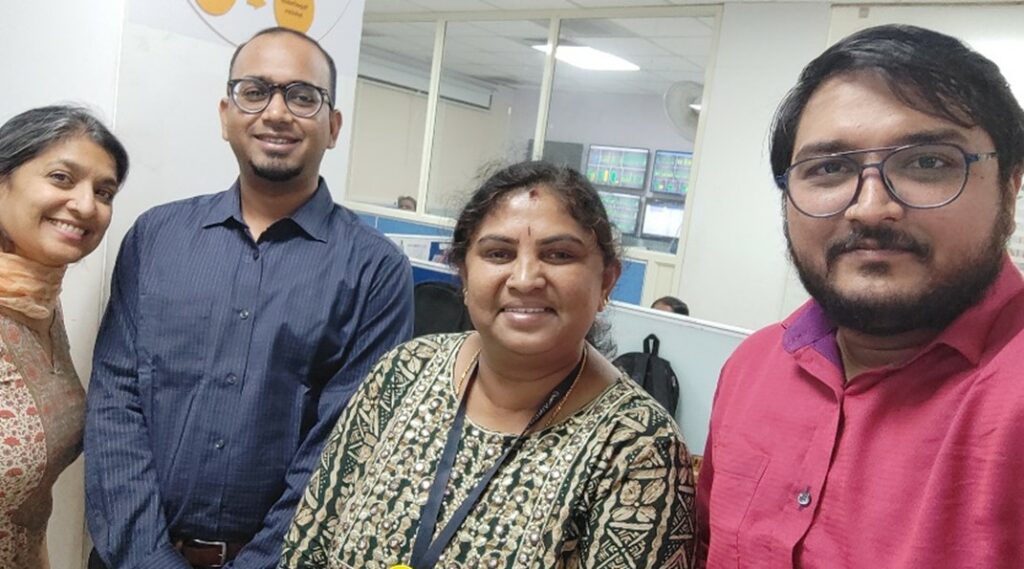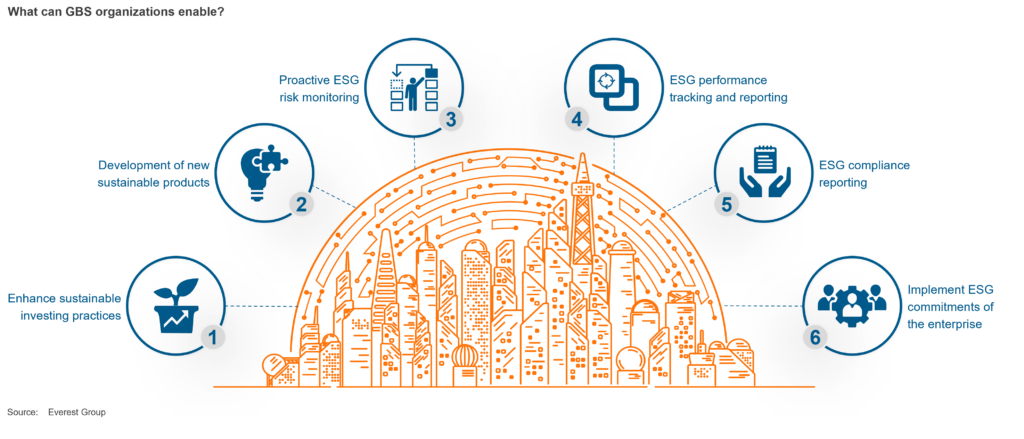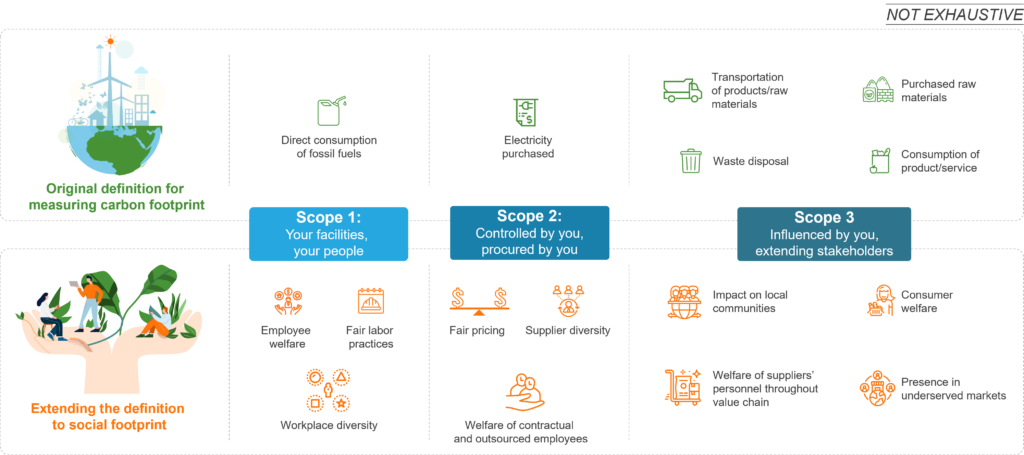The Power of Purpose: How Impact Sourcing Specialists are Transforming Lives | Blog
Seeing impact sourcing in action at Vindhya e-Infomedia validated to Everest Group that this growing business practice is more than a feel-good story but a win-win for individuals, companies, and communities. Hearing about the positive benefits firsthand from people with disabilities employed at the Bengaluru center left a lasting impression on the analysts who share their perspectives in this blog.
The Everest Group team was excited to see impact sourcing in practice, some for the first time, at Vindhya e-Infomedia, but they also had questions about whether impact sourcing would live up to its promise.
The visit to the Bengaluru center exceeded their expectations and reinforced that impact sourcing is a business imperative in today’s ESG-focused times. Highlights of the trip were meeting Vindhya e-Infomedia Founder and Managing Director Pavithra Y. Sundareshan and hearing from its employees.

Impact sourcing specialist Vindhya e-Infomedia was founded in 2006 with a vision of uniting business with impact. It has centers in Bengaluru, Hyderabad, Nagpur, Mysore, and Krishnagiri (Tamil Nadu) and plans to expand across India and abroad.
Employing people with disabilities as its main workforce, the company provides data entry, claims processing, customer onboarding, payroll, and data management processes to such clients as Airtel, IBM, and SAP AG. With its team of more than 2,400 employees based in cities, Vindhya defies the stereotype that only small companies in India operate Business Process Outsourcing (BPO) centers in rural areas.
Impact sourcing specialists like Vindhya e-Infomedia intentionally hire people from marginalized communities and train them to deliver IT and BPO services. These providers offer economic opportunities to individuals who face difficulties in finding employment, such as people with disabilities, those from marginalized communities or without formal educational degrees, and single parents.
Hiring people from these target groups often requires organizations to enhance their physical and digital infrastructures and/or modify policies to create a conducive work environment. However, the idea is not to create separate work areas for impact hires but rather to bring inclusivity to everything at the workplace – a belief that runs at the very core of Vindhya’s operating system.
Inspiring employee stories
Impact sourcing has the power to change the trajectories of individuals’ lives, as the team learned from hearing about the backgrounds, job profiles, and aspirations of employees at the Bengaluru center. Their resilience, persistence, and tremendous willpower to achieve was uplifting to the analysts who focus their work on impact sourcing.
The team was truly inspired! Here are the stories of four individuals who demonstrated the ways impact sourcing is benefitting individuals, families, and communities:
Vidya Patil
- Vidya Patil has been associated with Vindhya for eight years and currently handles banking payment collections and customer communications. Speaking in her native Marathi, she shared: “विंध्या सोबतचा ८ वर्षांचा हा प्रवास माझ्यासाठी अविश्वसनीय होता. अपंग व्यक्ती असुनही, विंध्या येथे नोकरी मिळाल्याने मला आर्थिक स्वातंत्र्य आणि स्वावलंबन मिळाले. या नोकरीमुळे, कुटुंबाबर अवलंबून असणार्या मला, कुटुंबाचा पोशिंदा बनवले. तसेच मला माझ्या भाचीच्या उच्च शिक्षणासाठी समर्थन करण्यासही सक्षम केले. विंध्याहे केवळ कामाचे ठिकाण नसुन; ते माझ्यासाठी दुसरे कुटुंब आहे. माझ्या भावाच्या आरोग्य आणीबाणीच्या काळात त्यांनी दिलेल्या आर्थिक आणि भावनिक आधारासाठी, मी विंध्याची कायम ऋणी राहील”
“The job at Vindhya gave me financial freedom and self-reliance. It has transitioned me from being a dependent to a caretaker and a breadwinner for my family. With this job, I could support my family as well as support my niece’s higher education. Vindhya provided immense financial and emotional support to me during my brother’s medical emergency. Vindhya is not just a workplace but a family itself, and I will always be utterly grateful to Vindhya.”

Digbijoy Adak
- Digbijoy Adak spoke in Bengali about his experiences overcoming barriers to gain self-sufficiency: “আমি দশম ক্লাস অবধি পড়াশোনা করেছি | আমি কম্পিউটার ব্যবহার করতে জানি | যেহেতু আমার পড়াশোনা বেশি নয়, আমি কোনো ভালো সম্মানযোগ্য কাজ পাইনি | জীবন যাপনের জন্য আমি একটা ছোট অর্কেস্ট্রা দলের সঙ্গে কাজ করতাম | এই সময় আমি ভিন্ধিয়া কম্পানি সম্পর্কে জানতে পারি | আমার এক বন্ধু সেখানে কাজ করছিলো আর আমাকে এই ব্যাপারে জানিয়েছিল | আমি এখন খুবই খুশি | আমি ভিন্ধিয়া-তে কাজ করতে পেরে একজন স্বাবলম্বী এবং স্বনির্ভর মানুষ হিসেবে পরিচিতি পেয়েছি |”
“I had completed my 10th grade education and knew how to use computers. However, since I was not highly educated, I was not able to find a good respectable job. I used to work with a small orchestra group for my livelihood. During that time, I came to know about Vindhya. A friend of mine was working here and informed me about it. I am very happy now. I have found a job in Vindhya and have become a self-sufficient and independent person.”
What he did not say directly but implied, is that his disability has been an unjust cause of discrimination in the past. At Vindhya, one’s disability status is not a barrier to a good job.
N Yashoda
- Having a hearing impairment does not prevent N Yashoda from excelling at converting documents from paper to digital. With her lip-reading skills and the aid of an experienced sign language translator/guide, Yashoda has fully integrated into Vindhya’s operations.

Madhabi Sardar
- Madhabi Sardar has a master’s degree, but a visual impairment prevented her from gaining a decent, well-paid job – until Vindhya. She now heads the braille team and aims to become a singing maestro in the future, showing it’s never too late to dream big.
The real significance of this business practice can be seen in the countless lives touched by the dignity of a good job, as these inspiring and heart-warming stories show.
Impact sourcing obstacles
Like any journey, even this one has obstacles. Impact sourcing often requires an extensive process to access the right talent. Additionally, investments in skilling and upskilling resources pose a challenge in managing high training costs.
The lack of benchmarks to measure key performance indicators (KPIs) or evaluate success makes it difficult to prepare appropriate success stories and business cases for impact sourcing. However, impact sourcing specialists are implementing robust practices to mitigate these challenges, and meaningful collaboration among all involved stakeholders is needed.
The visit was an eye-opening, humbling experience for the team who saw that the benefits of impact sourcing go beyond providing a paycheck but also give individuals a sense of community and belonging.

Pavitra’s parting words that impact sourcing is about ‘shared prosperity’ resounded with the analysts. Building partnerships to create an impact that benefits all involved stakeholders is needed to move the practice forward.
Everest Group commitment
The visit reinforced Everest Group’s commitment to advancing impact sourcing globally. As a signatory of the Clinton Global Initiative’s “Commitment to Action,” the firm has pledged to bring in half a million impact sourcing full-time equivalents (FTEs) into the ecosystem by the end of 2025 and has committed its research and expertise to help enterprises frame their impact sourcing strategies.
For more insights on measuring and using data for better business outcomes, register for the virtual roundtable, Measuring the Impact of Impact Sourcing. To discuss impact sourcing, reach out to [email protected], [email protected], or [email protected].



